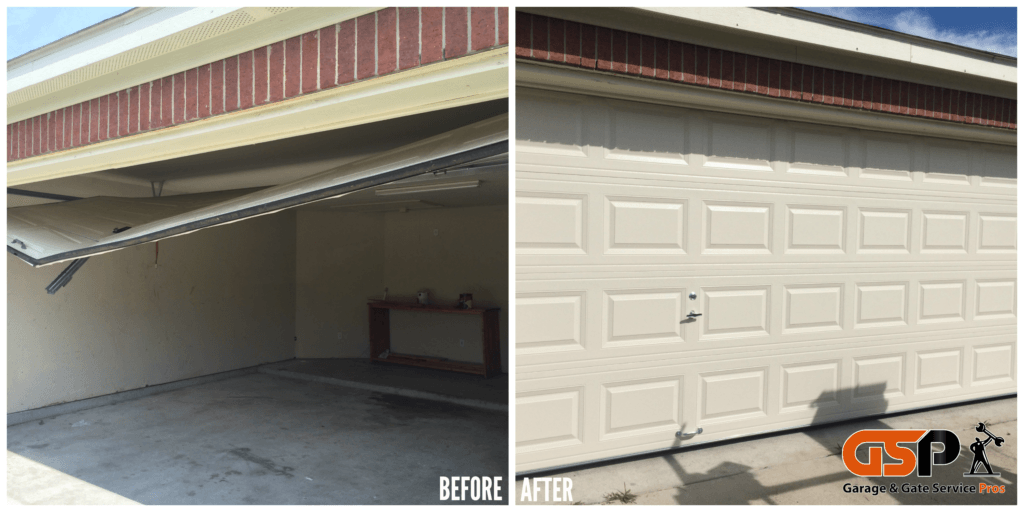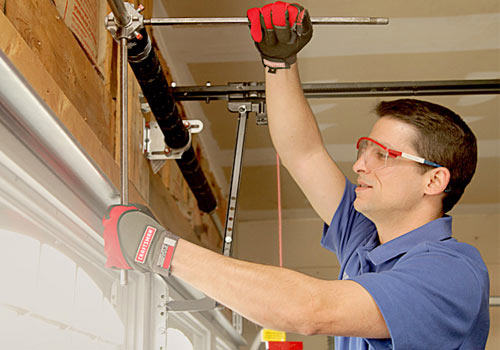Expert Garage Door Repair for Damaged Tracks and More
Wiki Article
Common Garage Door Troubles and Just How to Deal with Them
Garage doors are essential for both safety and security and benefit, yet they frequently present a range of common issues that can irritate homeowners. While some concerns might appear simple to solve, others may require a more nuanced understanding of garage door mechanics.Noisy Garage Door Procedure
A loud garage door operation can be a substantial source of aggravation for house owners, typically showing underlying mechanical problems. Such disruptions might stem from numerous reasons, including damaged rollers, loosened equipment, or inadequate lubrication. Identifying the source of the noise is critical for efficient resolution.Over time, these elements can degrade, leading to grinding or squeaking audios as the door moves. In addition, loose screws or screws in the door mechanism can produce rattling sounds throughout procedure.
Another contributing aspect is insufficient lubrication of the door's relocating components. Using a top notch lubricant to the tracks, springs, and rollers can considerably diminish rubbing and sound. Homeowners ought to execute this maintenance regularly to keep optimum performance.
Last but not least, the garage door opener might likewise create noise because of its age or mechanical problems. If the noise persists despite dealing with other elements, seeking advice from a specialist for a thorough examination and possible fixing might be required.
Door Will Not Open Up or Shut
Experiencing a garage door that won't open or shut can be unbelievably irritating and frequently signifies a breakdown within the system. A number of aspects can add to this issue, and determining the origin is necessary for efficient resolution.
Next, examine the safety sensors situated at the base of the door. These sensing units can come to be misaligned or obstructed by particles, protecting against the door from operating correctly. Tidy the sensing units with a soft towel and guarantee they are straightened.
Additionally, the garage door's interior parts need to be assessed. Problems such as a busted spring, worn-out rollers, or a damaged opener can hamper activity. If any components seem harmed, it might be suggested to seek advice from a professional for repair work.
Misaligned Tracks
(Emergency Availability)Misaligned tracks can drastically disrupt the smooth procedure of a garage door, bring about functional failings such as irregular activity or total immobilization. This problem typically arises as a result of a variety of elements, consisting of damage, unintended influences, or improper setup. When the tracks are misaligned, the rollers can not relocate openly, which not only stresses the motor however likewise postures security dangers.If you discover any type of disparities, it is vital to deal with the concern promptly. Thoroughly touch the track back into its right placement using a rubber mallet or a similar device, ensuring it is straight and level.
As soon as the placement is dealt with, retighten the screws to protect the track. For a more long-term option, consider strengthening the tracks with added braces. Regular upkeep, consisting of cleaning the tracks and guaranteeing rollers are in good condition, can avoid future misalignments. By addressing misaligned tracks quickly, you can restore the performance of your garage door and boost its durability.
Broken Springs
Among the various parts of a garage door system, busted springs are one of the most typical concerns that can substantially hinder its capability. Garage door springtimes are vital for balancing the weight of the door, enabling smooth opening and closing. When a spring breaks, it can result in a door that is hard to operate or, in some cases, totally unusable.There are two major kinds of springs: torsion springtimes, which are mounted over the door, and expansion springs, located on either side. Signs of a broken spring include a door that will not open up, a noticeable gap in the springtime, or a loud sound during operation. Attempting to run a garage door with a damaged spring can trigger more damage to the door or the opener.
Repairing busted springs is not a do it yourself project; it requires specialized tools and knowledge as a result of the high tension entailed. It is advisable to speak with helpful resources a professional service technician that can securely change the springs and make certain the door is properly stabilized. Routine upkeep and inspections can aid protect against springtime failures and expand the life-span of the garage door system.
Remote Issues

The initial step is to check the batteries in the push-button control. Replace them if they are weak or dead. If the remote still stops working to run, check the garage door opener to make certain that its sensing units are tidy and unhampered. Dirt, particles, or imbalance might prevent the signal transmission in between the remote and the opener.
Disturbance from other electronic gadgets can additionally restrain remote capability. Make sure that nearby tools, such as cordless routers or cordless phones, are not triggering disruptions. garage door service. If interference is thought, try relocating these tools even more away from the garage door opener
In many cases, the remote might require to be reprogrammed. Consult the manufacturer's standards to reset the push-button control and synchronize it with the garage door opener. If all else stops working and the remote remains to malfunction, take into consideration getting in touch with a professional service technician for a detailed assessment and potential replacement of the remote or opener.
Verdict
(Friendly Staff)In recap, typical garage door problems can significantly influence capability and safety and security. Proactive upkeep and prompt repair work can guarantee ideal performance and longevity of garage doors.Report this wiki page